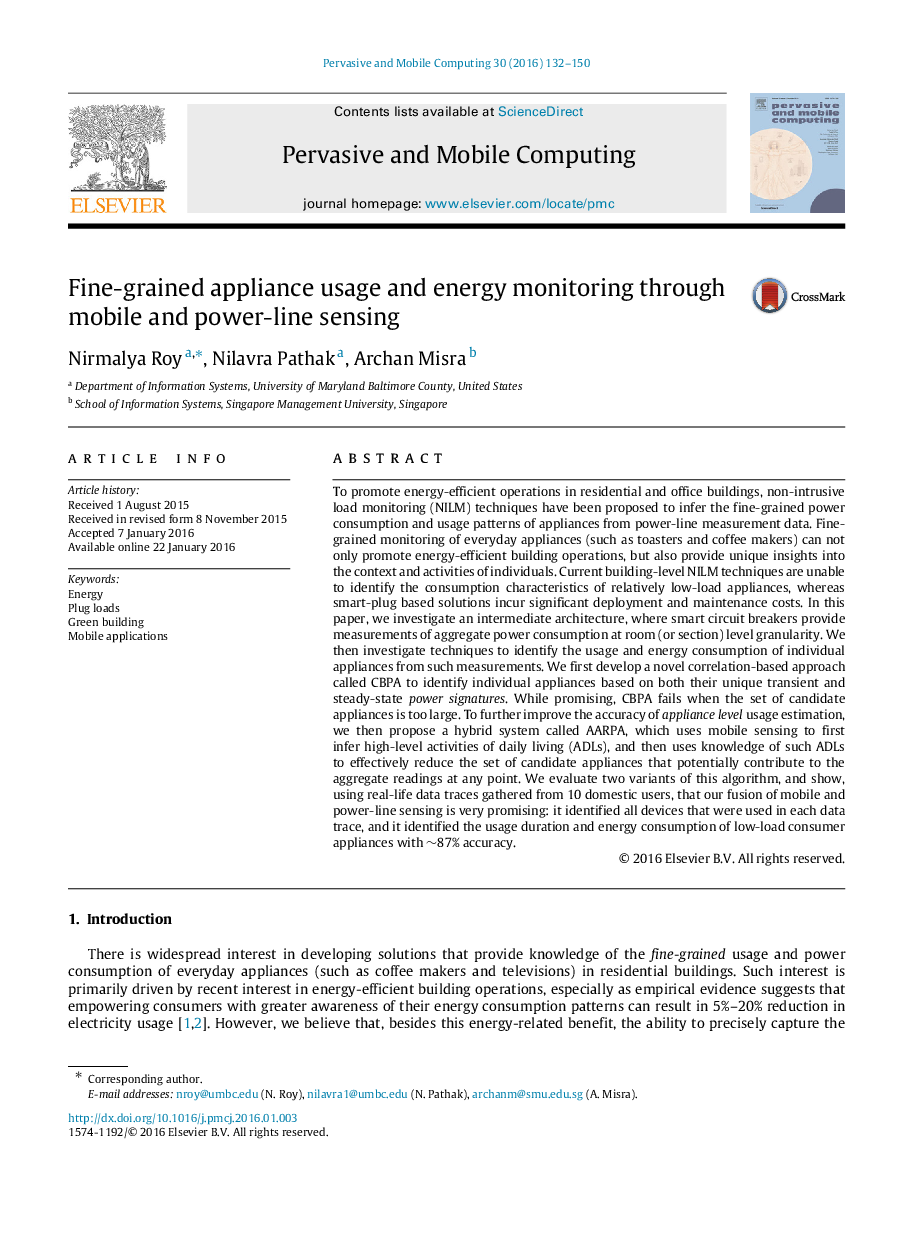| Article ID | Journal | Published Year | Pages | File Type |
|---|---|---|---|---|
| 463745 | Pervasive and Mobile Computing | 2016 | 19 Pages |
To promote energy-efficient operations in residential and office buildings, non-intrusive load monitoring (NILM) techniques have been proposed to infer the fine-grained power consumption and usage patterns of appliances from power-line measurement data. Fine-grained monitoring of everyday appliances (such as toasters and coffee makers) can not only promote energy-efficient building operations, but also provide unique insights into the context and activities of individuals. Current building-level NILM techniques are unable to identify the consumption characteristics of relatively low-load appliances, whereas smart-plug based solutions incur significant deployment and maintenance costs. In this paper, we investigate an intermediate architecture, where smart circuit breakers provide measurements of aggregate power consumption at room (or section) level granularity. We then investigate techniques to identify the usage and energy consumption of individual appliances from such measurements. We first develop a novel correlation-based approach called CBPA to identify individual appliances based on both their unique transient and steady-state power signatures. While promising, CBPA fails when the set of candidate appliances is too large. To further improve the accuracy of appliance level usage estimation, we then propose a hybrid system called AARPA, which uses mobile sensing to first infer high-level activities of daily living (ADLs), and then uses knowledge of such ADLs to effectively reduce the set of candidate appliances that potentially contribute to the aggregate readings at any point. We evaluate two variants of this algorithm, and show, using real-life data traces gathered from 10 domestic users, that our fusion of mobile and power-line sensing is very promising: it identified all devices that were used in each data trace, and it identified the usage duration and energy consumption of low-load consumer appliances with ∼∼87% accuracy.
